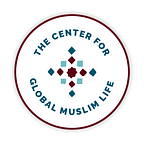Teach the Life of the Prophet Muhammad to Children with the Seerah App
The birth of a child on the Arabian peninsula that would change the course of history. The first steps of a group of refugees that marks the beginning of a civilizational reality that today is nearly 2 billion people strong and stretches across the entire world. A Christian king who benevolently saved the early Muslims as they came seeking refuge with him in Abyssinia. These are just a few of the stories told in the Seerah App, a beautiful and interactive storytelling app designed to engage children in learning the stories from the biography of the Prophet Muhammad.
Available in English and Arabic, and developed over a period of three years by the Dubai based AlphaApps, with a team of 70 artists, programmers, and voice artists. The Seerah App was produced on the level of a feature length film. The stories of the Prophet Muhammad’s life while accessible for adults through any number of books and films is often much harder for children to understand.
What’s unique about the Seerah App is that it puts stories at the level of children, literally, as each chapter opens with a storyteller sitting with a group of children. The app is broken up into seven chapters: The Childhood, Mecca, Revelation, The Message, Hijra to Abyssinia, The Boycott, and Hijra to Medina. Each chapter starts with the storyteller and then goes into full animated stories mixed with games and activities.
When difficult issues like oppression and migration are talked about, as they are in the chapters about the migration to Abyssinia and the migration to Medina, they are spoken of in a way that children can understand. In the story about the Hijra to Medina, one of the children is asked about their father who is on a business trip to Syria. As the child laments about missing his father, the storyteller advises him to have patience as he then begins to tell the story about patience and perseverance the early Muslims had as they faced oppression in Mecca.
One of the most powerful moments of interfaith solidarity in the Abrahamic traditions came when the Prophet Muhammad instructed a group of his companions to travel to Abyssinia to seek refugee with the Christian King Negus Ashama ibn Abjar (d. 635). In the Seerah App’s chapter on the migration to Abyssinia, this moment is reenacted with great detail.
As the Muslim community began to grow in Mecca the powerful Quraysh tribe did everything they could to stop the message of the Prophet from spreading. They even tried to offer the Prophet what they themselves desired most, wealth and power.
When the Prophet rejected their offers the Quraysh tried to destroy Islam. In the fifth year of Muhammad’s prophecy, revelation from God was sent to guide the Muslims with Surah Al Zamar telling them to migrate. A group of twelve men and four women left Mecca in secret, sailing across the Red Sea to Abyssinia. The Quraysh spotted them and a group of them followed them all the way to Abyssinia and the court of the King, the Negus. It is here that the rest of this chapter of the Seerah App plays out as the just Christian king embraces the Muslims and offers them his protection as the Prophet Muhammad had predicted he would.
This is an app filled with beautiful stories like this and told in a way that young people can understand. Check out this app today and the other apps we featured in our 2017 article on the best global Muslim apps:
To download the Seerah App click here for Apple and here for Android.
If you like this article, please click like (heart button) to help other people find it!
